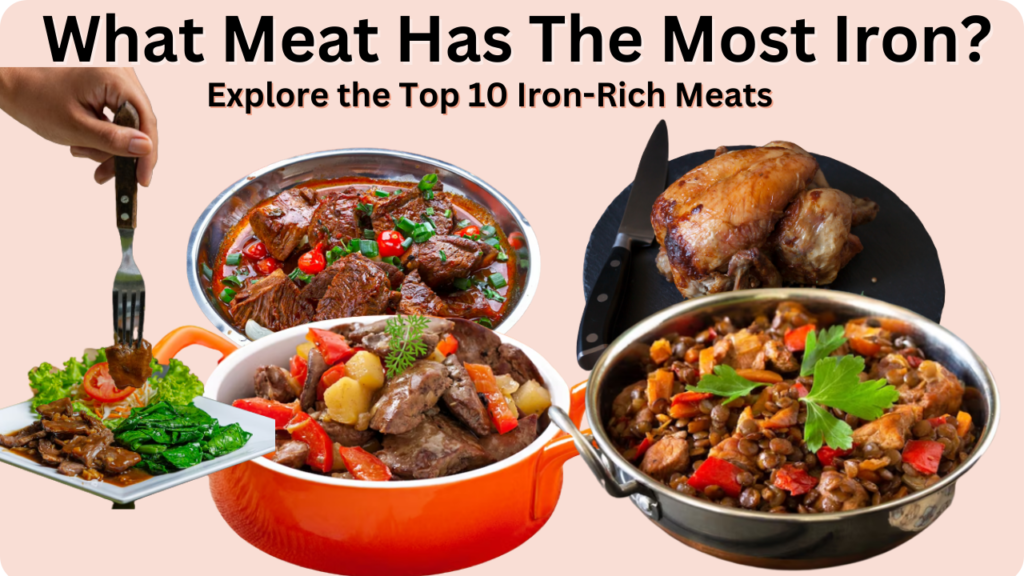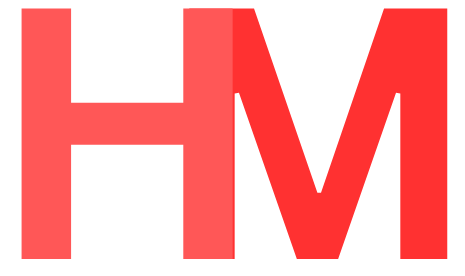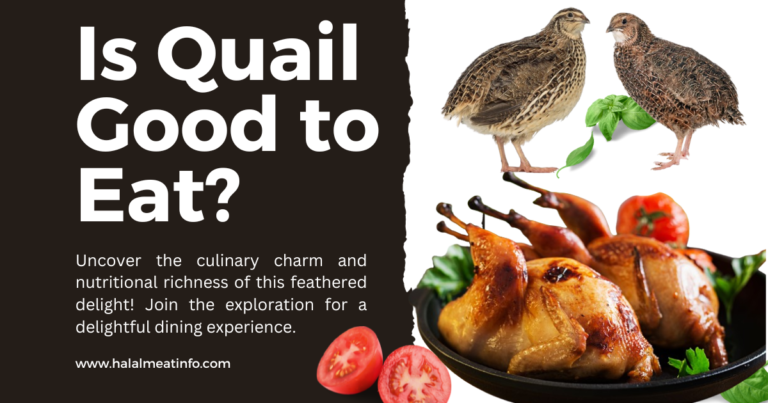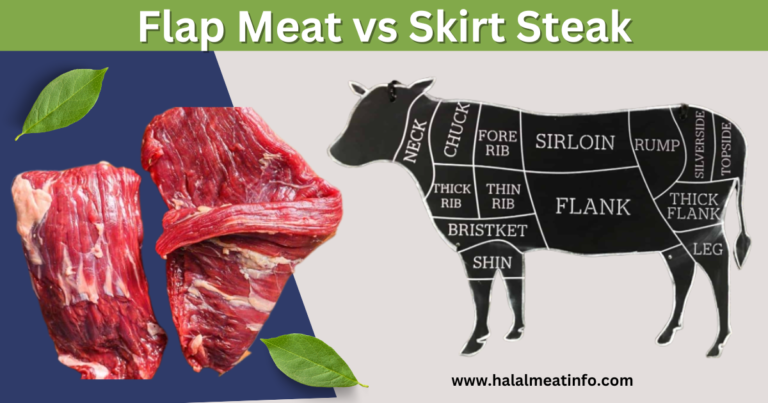What Meat Has The Most Iron: The Top Sources Of Iron In Your Diet
Incorporating iron-rich meats into our diet is about maintaining a nutritional balance and proactively approaching our overall health. Eating meat with high iron content can improve energy levels, enhance cognitive functioning, and a stronger immune system. However, the challenge lies in identifying which meats offer the highest iron content. This article is dedicated to introducing you to these high-iron meats, providing insights into their nutritional profiles, and offering suggestions on incorporating them into your daily meals. Get ready for an informative journey exploring the world of iron-packed meats.

Introduction to Iron-Rich Meats
Iron content varies among different types of meats, so not all meats are equal in this regard. Some meats naturally contain higher levels of iron, influenced by factors such as the animal’s diet, muscle function, and processing methods. This distinction is crucial because it can significantly impact your overall iron intake. Recognizing the meats with the highest iron content and knowing how to incorporate them into your diet effectively can make a big difference in your health and well-being. In the next sections, we’ll unravel the meaty mysteries behind iron content, providing a comprehensive understanding of which meats are the most iron-rich and why. This knowledge will empower you to make informed dietary choices that can boost your iron levels and contribute to a healthier lifestyle.
Types of Iron
Iron exists in two main forms, namely heme and non-heme iron [2]. Understanding the distinction between these two types is fundamental to optimizing your iron consumption and ensuring your body is receiving the iron it needs [1].
Heme Iron
Heme iron is a form of iron derived from animal sources, mainly meats. It is named ‘heme’ because it is found in the hemoglobin and myoglobin of animal tissues. This type of iron is more easily absorbed by the body, making it a highly efficient source of this essential mineral. Meats high in heme iron consist of red meats, poultry, and seafood.
Non-Heme Iron
On the other hand, non-heme iron is found in plant-based food sources, and its bioavailability (or the body’s ability to absorb it) is lower than heme iron. However, it can still contribute to your daily iron intake. Foods rich in non-heme iron include legumes, whole grains, nuts, and vegetables.
Balancing Heme and Non-Heme Iron
A well-balanced diet includes a mix of both heme and non-heme iron. While meat-eaters can rely on heme iron for a significant portion of their iron needs, vegetarians and vegans should take care to include a variety of non-heme iron sources in their diets. Likewise, omnivores should also consider including non-heme iron-rich foods in their diets for variety and added nutritional benefits.
Enhancing Iron Absorption
While it is important to include iron-rich foods in your diet, it’s equally crucial to understand how to increase your body’s ability to absorb this essential mineral. For instance, vitamin C can enhance the absorption of iron, so pairing iron-rich foods with foods high in vitamin C, such as citrus fruits, can enhance iron intake [5]. Conversely, certain substances like coffee and tea can hinder iron absorption, so it’s advisable to refrain from consuming them alongside iron-rich foods.
The Integral Role of Iron in the Human Body
Iron is pivotal in the human body, contributing significantly to overall health and functioning [4]. The primary role of iron is to create hemoglobin, a protein in red blood cells that facilitates oxygen transport from the lungs to the tissues and organs throughout the body [3]. Iron also helps produce myoglobin, a protein that provides oxygen to the muscles, promoting their health and efficiency.
The Impact of Iron on Cognitive Functions
Iron’s role extends to cognitive functions, where it assists in the development and functioning of the brain. It aids in producing neurotransmitters, the brain’s chemical messengers, ensuring smooth communication between nerve cells [6]. Having adequate iron levels supports enhanced concentration, learning abilities, and memory.
Iron’s Role in Immune System Functioning
Iron is fundamental for a well-functioning immune system and plays a role in the proliferation and maturation of immune cells, particularly lymphocytes, which are integral to the body’s ability to fight off pathogens and infections [7]. An adequate iron intake supports a robust immune response, helping you stay healthy.
The Relationship between Iron and Energy Levels
Iron plays a significant role in energy metabolism, as it is part of the enzymes involved in energy production and metabolism. When your body has sufficient iron, it can efficiently produce the energy you need for your daily activities, keeping fatigue at bay. A lack of iron can lead to anemia, characterized by persistent tiredness and a lack of energy.
Iron’s Contribution to Healthy Skin, Hair, and Nails
Iron is involved in collagen synthesis, a vital protein essential for maintaining healthy skin, hair, and nails [8]. By helping to carry oxygen to the cells, including those of the skin, hair, and nails, iron contributes to their healthy growth and appearance. Iron deficiency can cause problems like hair loss and brittle nails, among other issues.
List of High-Iron Meats
Red Meat
Red meat, including beef, lamb, and venison, is well-known for its abundant heme iron content. A 3-ounce portion of ground beef can supply approximately 2.5 mg of iron [9]. Similarly, lamb is a good source of iron, with a 3-ounce serving providing around 2.0 mg [9]. Other red meats like venison also contribute significantly to your iron intake. It’s essential to mention that the iron content may differ based on the cut and preparation method of the meat. Remember to balance your red meat intake with other food sources to enjoy a varied and balanced diet.
Organ Meats and Iron
Organ meats like liver, kidney, and heart are true powerhouses regarding iron content. Notably, the liver stands out for its exceptionally high levels of iron. For instance, a 3-ounce serving of beef liver can provide as much as 5 milligrams of iron [10]. These meats also contain other essential nutrients like vitamins A, B12, and copper, which help create DNA and keep our nerves and blood cells healthy [11],[12]. While they might not be commonplace in many modern diets, incorporating organ meats can significantly boost your iron intake and overall nutrient profile.
Iron in Poultry
While red meat often takes center stage in discussions about iron-rich foods, poultry should not be overlooked. Dark poultry meats such as chicken and turkey thighs are notably higher in iron than white meat. A 3-ounce portion of dark turkey meat supplies approximately 1.5 to 2.0 milligrams of iron [9].They offer a nutritious alternative for those looking to manage their red meat intake without compromising on their iron needs. Coupled with their high protein content and essential vitamins, poultry provides a well-rounded nutritional profile.
Fish and Seafood as Iron Sources
Fish and seafood are excellent sources of heme iron. Some varieties of seafood, like oysters, clams, and mussels, contain notably high levels of iron. Six medium oysters can deliver about 5 to 6 milligrams of iron [13]. Fish like tuna and sardines also offer ample amounts of this essential mineral. Additionally, these sources are also high in essential nutrients like zinc, vitamin B12, and omega-3 fatty acids, contributing to overall health and wellness.
Iron-Fortified Meats
Many food manufacturers now offer iron-fortified meats to combat iron deficiencies and improve nutritional intake. These products have additional iron added during manufacturing, enhancing their nutritional value. Common examples include certain types of sausages and hamburgers. These options can be particularly beneficial for individuals with higher iron needs, such as pregnant women or those with diagnosed iron deficiencies.
Comparing Iron Content in Organ Meats and Muscle Meats
Overview
When comparing the iron content between organ meats and muscle meats, organ meats generally take the lead. These seafood options have a greater abundance of heme iron, making it easier for the body to absorb. In addition to their iron content, organ meats are packed with other essential nutrients making them a nutrient-dense choice.
Iron Content in Muscle Meats
Muscle meats like beef, chicken, and fish are good sources of heme iron. However, the iron content can vary depending on the cut and the animal from which the meat comes.
Iron Content in Organ Meats
In contrast, organ meats such as liver, kidney, and heart exhibit remarkably higher iron concentrations. For instance, a 3-ounce serving of beef liver can provide up to 5 milligrams of iron [10]. This is more than double the iron content found in the same serving size of muscle meats like beef or poultry.
Why the Difference in Iron Content
The difference in iron content between organ meats and muscle meats can be attributed to the function of these organs within the animal’s body. Organ meats, especially the liver, store iron to facilitate the formation of red blood cells, thus explaining their higher iron content. Muscle meats, while they do contain iron, have lower concentrations due to their primary role in movement rather than nutrient storage.
Implications for Dietary Choices
Given the differences in iron content, incorporating a variety of both muscle and organ meats in the diet can be beneficial. While muscle meats can contribute to daily iron requirements, organ meats offer a more concentrated source of this essential mineral.
Iron Absorption: Factors That Enhance or Inhibit It
Enhancers of Iron Absorption
Certain substances can enhance the absorption of iron in the body. Vitamin C, scientifically known as ascorbic acid, is a powerful enhancer of iron absorption [5]. It can help convert the non-heme iron found in plant-based foods into a form that’s easier for the body to absorb. Other dietary sources that can enhance iron absorption include meat, fish, and poultry.
Inhibitors of Iron Absorption
Conversely, certain substances can hinder the absorption of iron. These include compounds found in certain plant-based foods, such as phytates in whole grains and legumes, polyphenols in some vegetables and teas, and calcium in dairy products. Eating these substances alongside iron-rich foods may diminish the body’s capacity to absorb iron.
The Role of the Gut in Iron Absorption
Iron absorption greatly relies on the human gut, where enterocytes, the cells lining the gut, take up iron into the body. However, conditions that affect gut health, like Celiac disease or inflammatory bowel disease, can disrupt iron absorption, potentially resulting in a deficiency.
The Impact of Meals on Iron Absorption
Meal composition can also influence iron absorption. Consuming iron-rich foods as part of a varied diet that includes enhancers of iron absorption can optimize the body’s uptake of this essential mineral. Conversely, a meal high in iron inhibitors might reduce iron absorption.
Iron Supplements and Absorption
Iron supplements can be a helpful tool for boosting iron intake, especially for individuals at risk of iron deficiency. However, the absorption of iron from supplements can be influenced by the same factors as dietary iron. It is commonly advised to take iron supplements on an empty stomach and avoid consuming them alongside iron inhibitors to enhance iron absorption
Plant-Based Iron Sources for Vegans and Vegetarians
Meeting daily iron needs can be more challenging for those following a vegan or vegetarian diet, but it’s far from impossible [4]. There’s a plethora of plant-based foods that provide substantial amounts of iron.
Legumes
Legumes, such as lentils, chickpeas, peas, and soybeans, are rich sources of iron and protein-packed, making them essential components of vegan and vegetarian diets.
Whole Grains
Whole grains like quinoa, brown rice, and oatmeal offer iron and provide a variety of essential nutrients, such as fiber, magnesium, and B vitamins.
Leafy Green Vegetables
Leafy green vegetables such as spinach, kale, and Swiss chard are abundant sources of non-heme iron. Additionally, these vegetables are rich in vitamin C, which can boost the absorption of iron in the body.
Iron-Fortified Foods
Several plant-based foods are fortified with iron. These include certain types of bread, cereals, and plant milk. Iron-fortified foods can significantly contribute to meeting daily iron requirements.
Seeds and Nuts
Seeds such as pumpkin, sesame, hemp, flaxseeds, and nuts like cashews and pine nuts, contain good amounts of iron. Incorporating them into meals or using them as snacks can help increase iron intake.
You may like to read about the meat alternative plant based iron and nutrition rich food.
Even while consuming these iron-rich foods, vegetarians and vegans should be mindful of iron absorption inhibitors and try to pair these foods with sources of vitamin C to enhance absorption. Moreover, individuals following vegetarian or vegan diets may require a higher intake of iron compared to those who include meat in their meals, as non-heme iron from plant-based sources is not as easily absorbed by the body. It is essential for them to seek guidance from a dietitian or healthcare professional to ensure their dietary needs are adequately met.
Cooking Methods and Iron Retention
The method of cooking can significantly influence the iron content in food. Different cooking techniques, such as boiling, grilling, frying, or steaming, can affect the amount of iron retained in the food. Generally, less cooking time and lower temperatures help to preserve iron and other nutrients. Overcooking or using high heat can degrade some of the iron content. Furthermore, cooking in cast-iron cookware can augment the iron content of food, particularly when preparing acidic foods like tomato sauce. Meanwhile, cooking with stainless steel or non-stick pans does not contribute additional iron. As with all nutrients, it is essential to use cooking methods that maximize nutrient preservation to optimize iron intake and absorption.
The Importance of Pairing Iron-Rich Foods with Vitamin C
Vitamin C is vital in enhancing iron absorption, particularly for plant-based foods with non-heme iron. This is crucial for vegetarians and vegans primarily relying on non-heme iron sources. Combining iron-rich foods with vitamin C sources like citrus fruits and leafy greens improves iron utilization. Implementing this nutritional energy, like adding lemon to a spinach salad or enjoying orange juice with fortified cereal, can optimize iron levels. A varied, balanced diet, mindful of vitamin C’s power in supporting iron absorption, is key to overall nutritional well-being, especially for those with heightened iron needs or following plant-based diets.
FAQ’s
Among meats, organ meats like liver are known to have the highest iron content.
Liver contains significantly more iron than other meats, with beef liver being particularly rich in this essential mineral.
Besides liver, other iron-rich meats include beef, lamb, and dark meat chicken or turkey.
Yes, plant-based sources like lentils, tofu, and beans are also rich in iron and can be part of a balanced diet for those seeking non-meat iron sources.
Conclusion
Iron is a vital nutrient that is pivotal in various bodily functions, most notably oxygen transportation and energy production. Ensuring optimal iron intake and absorption is essential, whether it’s through a diet rich in diverse iron sources, careful meal planning, or the prudent use of supplements. For individuals following a plant-based diet, it’s beneficial to leverage the iron-enhancing power of vitamin C and be mindful of iron inhibitors. While navigating the complex world of iron intake may seem daunting, with knowledge and understanding, meeting your iron needs and maintaining a healthy, well-balanced diet is entirely achievable. Consulting with healthcare providers or dietitians is recommended to tailor dietary choices to individual needs.
References
- “Iron,” The Nutrition Source, Harvard T.H. Chan School of Public Health, Link
- “Iron in diet,” MedlinePlus, U.S. National Library of Medicine, Link
- “Iron,” National Institutes of Health, Office of Dietary Supplements, Link
- “Iron,” Academy of Nutrition and Dietetics, Link
- “The Role of Vitamin C in Iron Absorption,” International Journal for Vitamin and Nutrition Research, PubMed, Link
- Jáuregui-Lobera I, (2014). Iron deficiency and cognitive functions. Link
- Soyano A, Gómez M. et al, (1999). Role of iron in immunity and its relation with infections. Link
- Wright JA, Richards T, Srai SK, (2014). The role of iron in the skin and cutaneous wound healing. Front Pharmacol. Link
- Dairy Guideline for Americans. Food Sources of Iron. Link
- U.S. DEPARTMENT OF AGRICULTURE. Link
- “Vitamin A and Carotenoids”, National Institutes of Health, Office of Dietary Supplements, Link
- O’Leary F, Samman S (2010). Vitamin B12 in health and disease. Link
- British Columbia. Iron in Foods. Link






